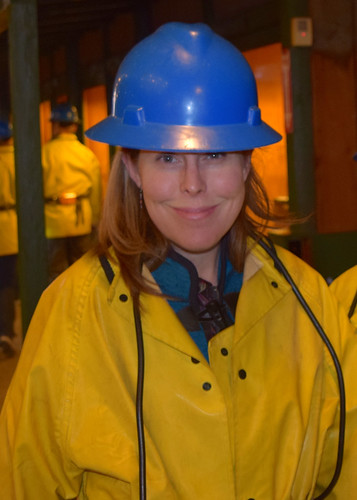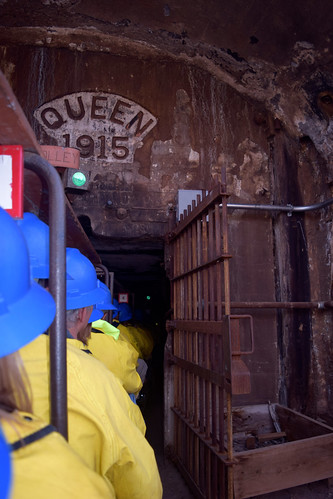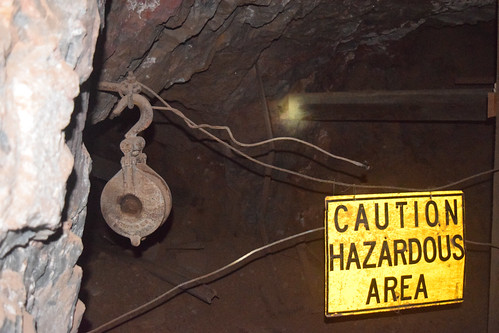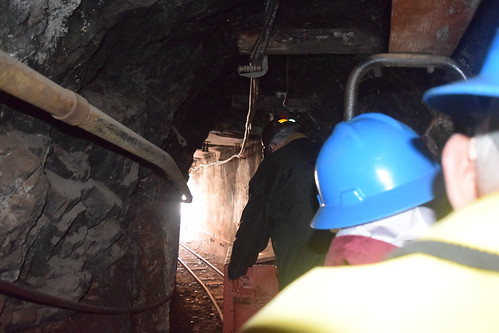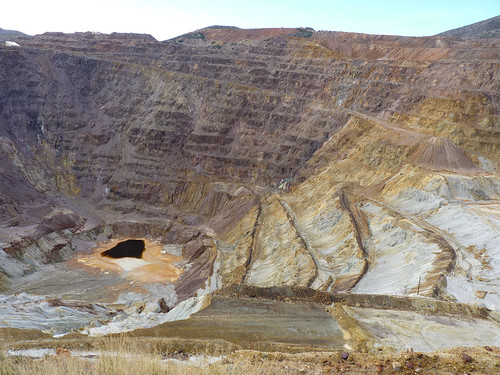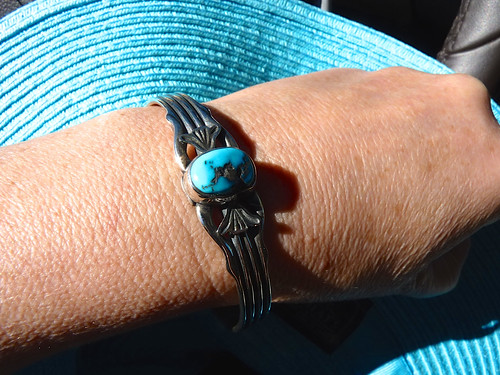Everyone looks hideous in a hard hat, but I dutifully donned my hat and yellow slicker in preparation for a tour of the Copper Queen Mine in Bisbee, AZ.
I’m fascinated by mines, and my novel contains a number of scenes set in the mines of Cerro Rico. The Queen Mine is not as huge as the operations in Potosi, but it has seven levels and miles of tunnels, and employed shifts of up to 400 men during its heyday.
Guided by a former miner, we entered the third level of the mine and rode around on a bicycle-built-for-twenty, pulled along by one of the narrow gauge engines formerly used to haul minerals. The mine was fascinating, despite being narrow and claustrophobic and cold.
Our guide showed us the different kinds of drills the miners used to drive holes deep into the rock, and he demonstrated (without blowing anything up!) the standard technique for setting off twenty-five consecutive rounds of dynamite. Dangerous work.
The Copper Queen was known as a bonanza mine, with an average of 23% copper ore. Some sections contained up to 40% copper. But later the percentage of ore declined to the single digits, and the mine was closed. Mining companies turned their attention to open pits instead.
Outside the Copper Queen, we were just a few steps away from the Lavender Pit mine, named for Lavender the engineer, not the color.
The Lavender Pit is a massive, horrifying hole in the ground. But mining is a rough and ugly and dangerous business all around. Hundreds of men died mining the Copper Queen, especially before safer drilling techniques reduced the dust spray that leads to silicosis. I imagine that engineers like Lavender did the best they could with what they knew at the time–to find out what was in the ground, and to find a safe and effective way to get it out. But the results aren’t pretty.
One of the byproducts of the copper mining in the Lavender Pit was Bisbee Blue, a valuable and richly tinted turquoise. It was found in the rubble hauled away from the pit. Finely webbed and much harder than the common Sleeping Beauty turquoise, Bisbee Blue is one of those artifacts of barbarism–beauty that has its source in ugliness and environmental degradation.
As a birthday present to himself, The General wanted to buy me some turquoise jewelry, but we didn’t find any pieces with Bisbee Blue, at least not any made by Native silversmiths. Later in the week, however, we visited the Lone Mountain Turquoise Company in Tubac, and I chose a bracelet made by Navajo artists Everett and Mary Teller. The stone, which has an interesting matrix, is from the Kingman mine in Arizona.
We chatted with the jeweler at Lone Mountain, who identified my earrings as Royston turquoise from Nevada. (“Deep green color, rusty orange spiderweb.”) We asked him about Bisbee Blue, and he said it’s not mined anymore, which adds to its value. Then he told us about another kind of turquoise, one even more rare and valuable than Bisbee Blue. He opened up his safe and brought out a bracelet worth more than my car. The stone: dark blue with an extremely dense black spiderweb matrix. “Landers Blue,” he called it. Like everything wrenched from the broken places of the earth, it was beautiful.
